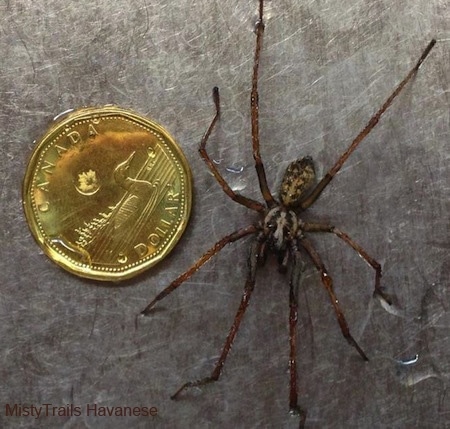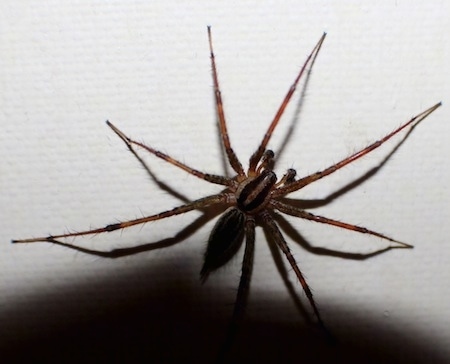
Funnel weaver spider spotted on Vancouver Island, Canada

Male Funnel Weaver Grass Spider at about 2 or 3 months old—"This is a male funnel weaver grass spider. Exactly which species I'm not sure. Most species defined as grass spiders are harmless, this fellow included. Males do a lot of wandering but don't often come into the proper living spaces of humans. Females build triangular (usually, not always) shaped sheet like webs with funnels in grass, around stones, shrubs, trees, or in corners of porches or other outdoor areas. The insect prey will land on the web, which is not all that sticky, and the spider will dash out, pounce the prey, inject it with venom, and retreat back to the funnel with or without the prey. Males spend most of their lives wandering in search of mates, usually after mating the male dies. Females construct their egg sacks and stick them to the underside of various objects in autumn and then the females die off with the frosts of fall, often while guarding their egg sacs. The eggs hatch in spring or in warmer areas a few weeks after being laid. These spiders can live up to a year and many can live past frosts surprisingly into early winter. Funnel weavers are often mistaken for brown recluses as are yellow sac spiders often mistaken for them. Brown recluses are light tan to darker brown, have a violin shape on their thorax (their backs, by where all the legs connect to the body) and do not have decorative looking abdomens (their abdomens are very plain, usually lacking noticeable patterns). Yellow sac spiders are house dwellers, are pale yellow to light tan in color, and often have black feet. They are very plain looking spiders and usually take up residence in corners, cocooning themselves in webbing. Males and females are wanderers that hunt out their prey instead of using webs to catch it. They can have painful bites (like a hornet sting) with the possibility of necrotizing so do not handle yellow sac spiders. Hopefully this can clear up any confusion about funnel weaver grass spiders or sac spiders and brown recluses :)"